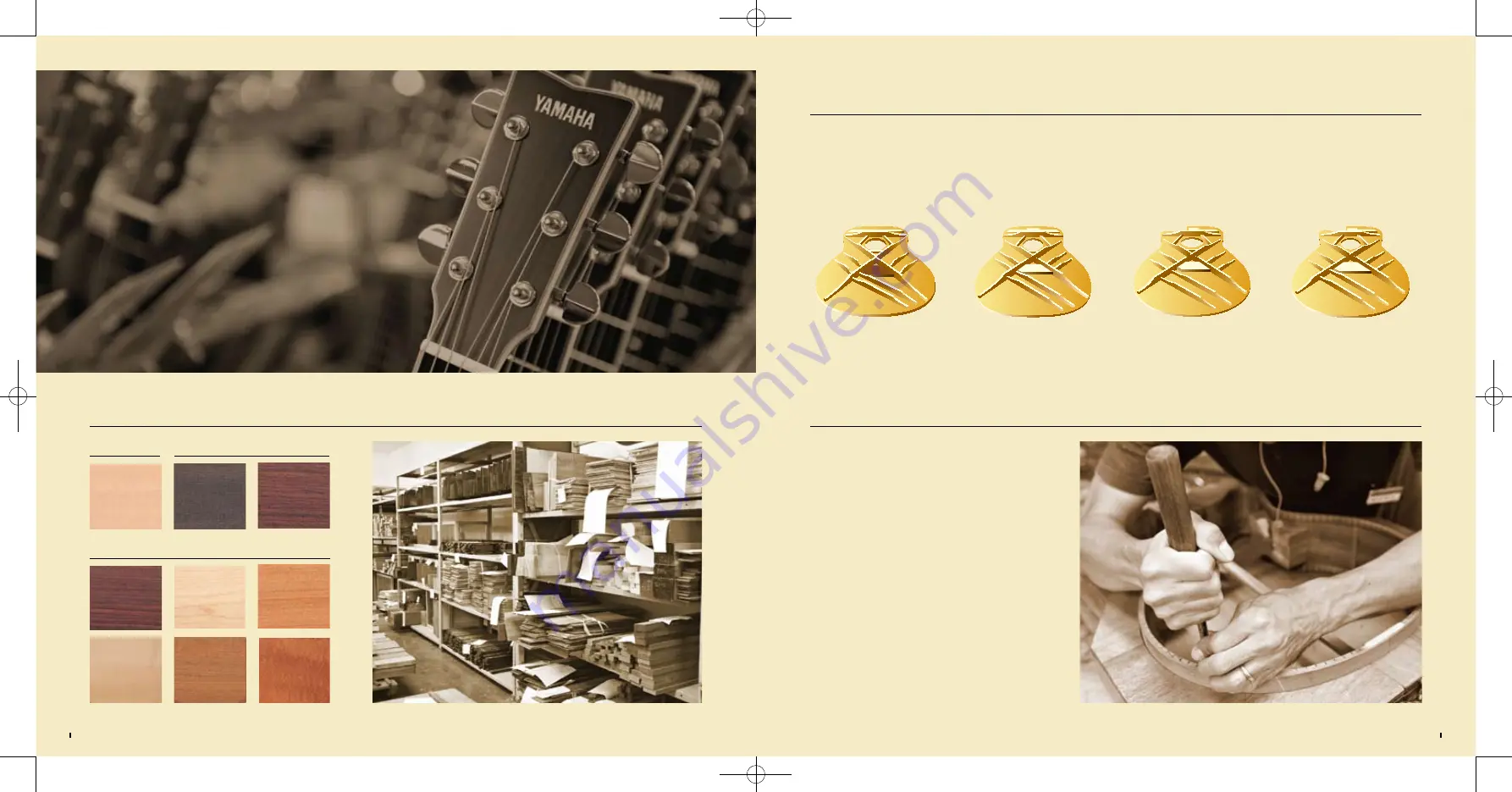
Elements of Sound
L Series
Non-scalloped, 90˚ X-type bracing. 8 non-
scalloped braces deliver tone that is thick
and well focused.
FG/FS Series
Non-scallop, X-type bracing design. Deliv-
ers deep lows full of presence that are
unique to the Yamaha sound, and a clear
upper end. Response is clear and tight.
APX Series
Non-scalloped X-type bracing design. Deliv-
ers a well-balanced sound when played acous-
tically. Oval soundhole offers thicker middle
highs that are unique to the APX sound.
CPX Series
Non-scalloped, X-type bracing positioned
closer to the sound hole enhances low-end.
Overall rich sound with good response and
powerful lows.
Back & Sides
Woods
Craftmanship
Quilted Mahogany
Mahogany
Sycamore
Walnut
Indian Rosewood
Maple
Top
Finger Board & Bridge
Spruce
Indian Rosewood
Ebony
Yamaha’s true strengths as a guitar maker are not apparent in product
brochures or specifications, but they are clearly reflected in the sound,
playability, dependability, and overall quality of every guitar that bears the
Yamaha name. “The Yamaha Advantage” includes information that will
hopefully provide a clearer picture of the prodigious resources and
effort that give artists who choose Yamaha a significant musical advantage.
Bracing – thin strips of wood glued to the underside of the guitar’s top
– is, in addition to the type and cut of the wood used, one of the most
important elements influencing the guitar’s volume and tone.
Bracing applied to the back and sides also has an effect on sonic per-
formance. The bracing configuration used can mean the difference
between the success or failure of an instrument, and ideally will comple-
Yamaha Acoustic Guitars
Essential Knowledge and
The Yamaha Difference
Even with the advanced manufacturing technology
available today it simply isn’t possible to entirely au-
tomate the production of first class acoustic guitars.
The complexity of the task in addition to the need for
constant awareness of the materials being used and the
ability to minutely adjust for variations is beyond the
scope of available technology.
Machines do play a vital role, but there is no substitute
for the skill and sensitivity of experienced craftsmen
at many stages during the production of fine musical
instruments.
In addition to factories in Japan, Yamaha operates gui-
tar factories in China and Indonesia that are run in the
same way. From raw materials to production processes,
Yamaha maintains the same demanding standards at all
factories to ensure that every instrument that bears the
Yamaha logo delivers the fit and finish plus the sound
and playability that we intend and our customers have
come to expect.
ment and enhance the qualities of the woods used and the instrument’s
overall design. Too much bracing or braces that are too heavy will result
in a dead sounding guitar. At the other extreme – too little bracing or
braces that are too light – the guitar might sound unfocused and boomy,
and the top may be prone to distortion and breakage.
Yamaha Essential Knowledge
43
Yamaha Essential Knowledge
44


















